Birding The Cleveland Way – Gribdale to Charltons
Growing up on the northern edge of the North York Moors National Park, Richard has always wanted to walk the entire length of the Cleveland Way, to explore the landscape, birds and wildlife along this fabulous National Trail. His plan is to walk a different section every month over the course of 2024 and write a blog in the process. Joining him on these leisurely walks is artist Jo Ruth.
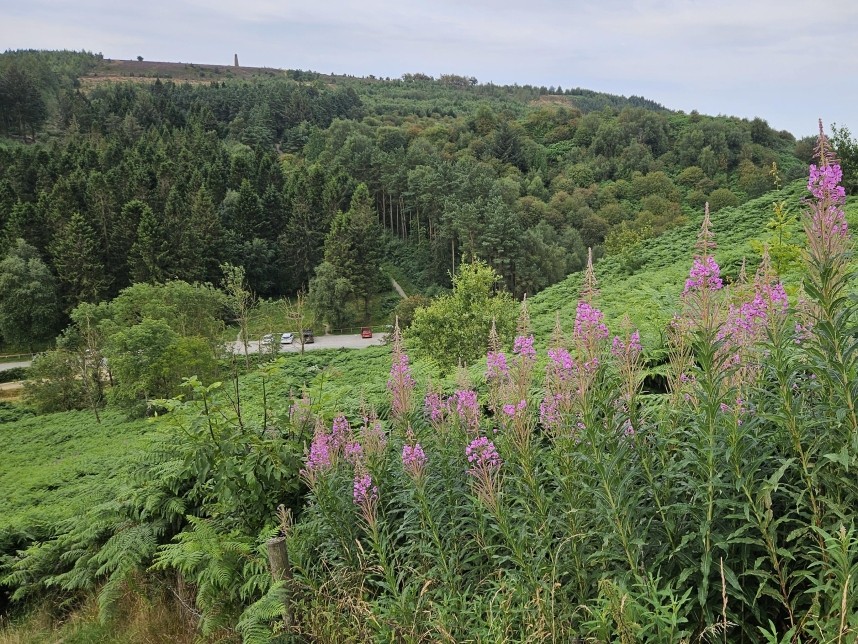
Overlooking Gribdale Car Park and Captain Cooks Monument © Richard Baines
Starting where we finished the last leg of our walk, we arrived at the well-located car park in Gribdale just as the sun was warming the hillside of Great Ayton Moor.
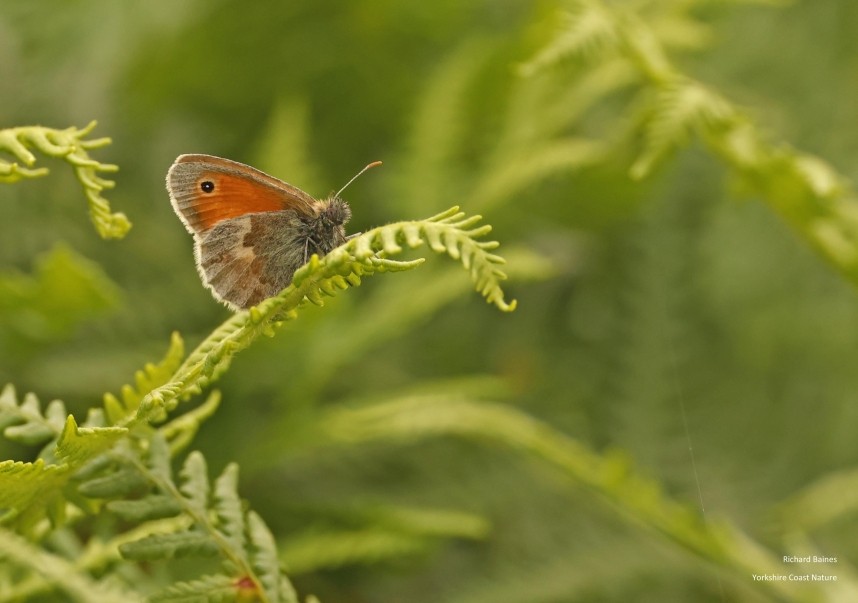
Small Heath on Great Ayton Moor trackside July 2024 © Richard Baines
The recent dry weather created excellent walking conditions for us and also suited a colony of Small Heath which we discovered at the top of the hill. Adjacent to the path between the stone and the heather, fine grasses such as Sweet Vernal and wild flowers such as Tormentil attracted these delicate butterflies. By the end of the walk, we had found two more small colonies.
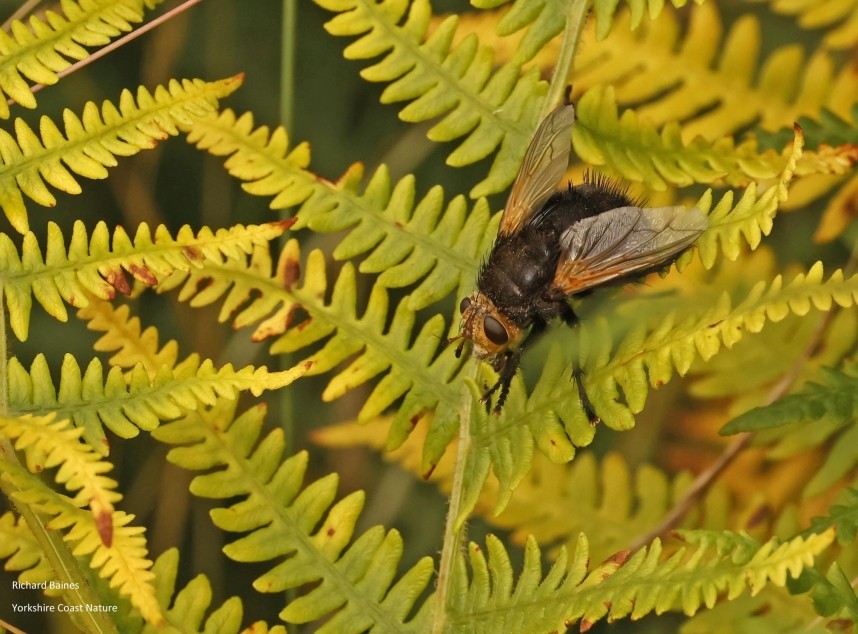
Tachina Grossa Great Ayton Moor July 2024 © Richard Baines
Not far away from the Small Heath was a big Tachina Grossa. These spectacular insects are one of the largest parasitic flies in Europe, with huge eyes and coloured wings they look like they belong in an anime comic book. I had not seen one for several year so this proved to be one of my highlights of this walk.
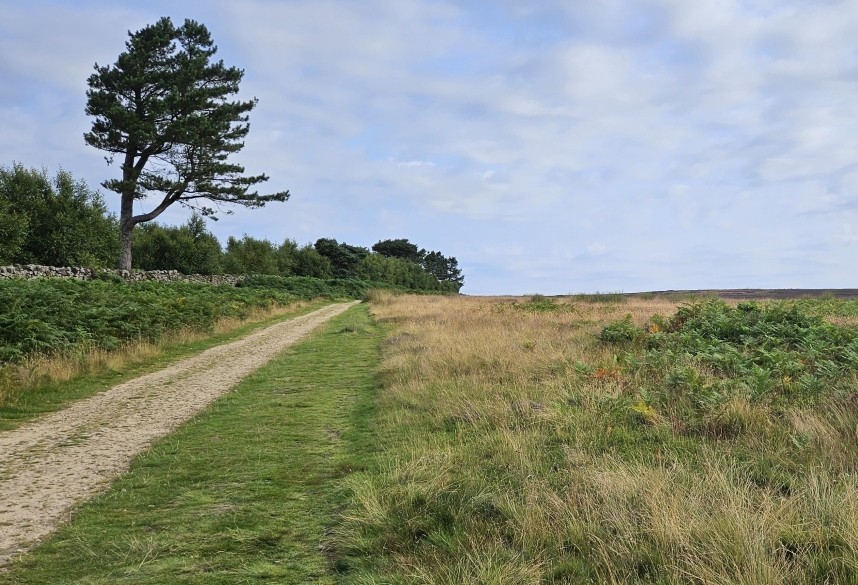
Grassland borders by the Cleveland Way at Great Ayton Moor July 2024 © Richard Baines
Throughout our walk across the heather moorland, we realised the importance of this discrete network of grassland habitat between track and moor. Untouched by burning and lightly grazed by sheep it provided a wide range of endlessly diverse wildlife sightings from Common Lizards to Small Heath butterflies. The end of July is never a great time for birding these landscapes. The breeding waders have left the moor and many songbirds have stopped singing so it’s the perfect time to switch over to insects and flowers.
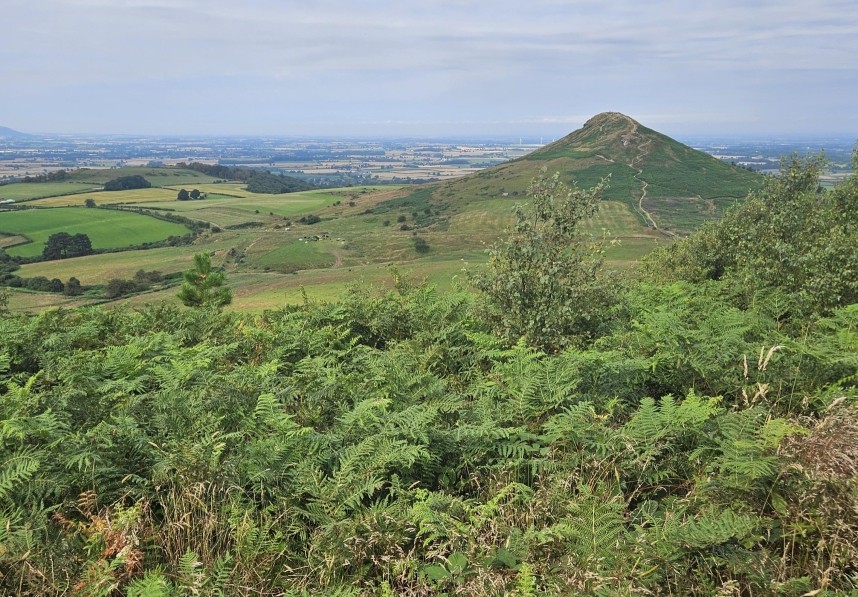
Roseberry Topping July 2024 © Richard Baines
From Great Ayton Moor the trail heads due north to Newton Moor taking in spectacular views to Roseberry Topping. This famous hill has been shaped by a combination of natural processes and human intervention for thousands of years. Sandstone, ironstone and mudstone dominate the rocks and the shape has been influenced by a period of intensive jet and ironstone mining a hundred years ago. My memory of the hill is dominated by the birds I used to see in the area when I was a teenager in the 1980s. A pair of Northern Fulmars nested on the top of the cliff at that time. They must have been the furthest inland breeding fulmars in the UK.
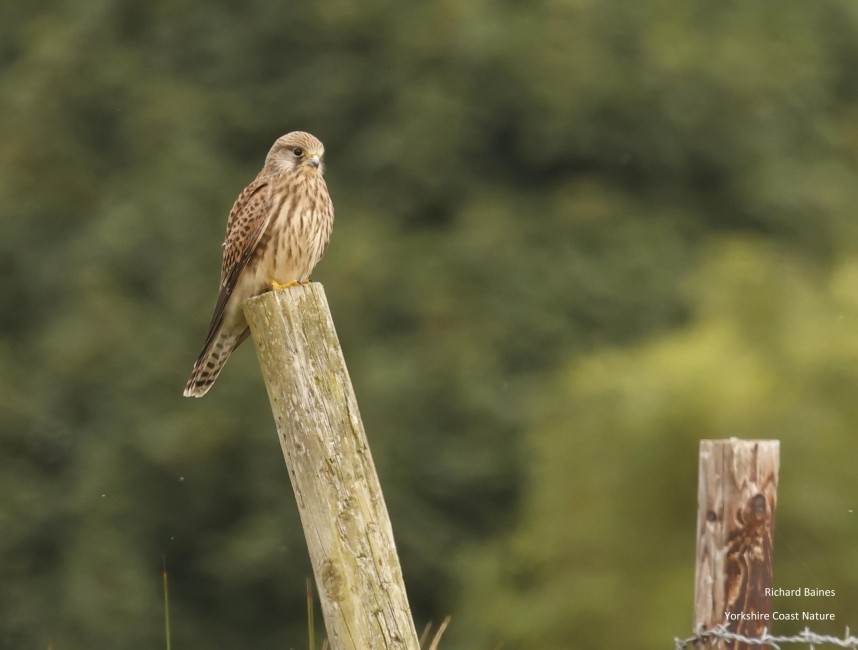
Common Kestrel - Newton Moor July 2024 © Richard Baines
We have lost the Fulmars from Roseberry now but shortly after we passed the hill on Newton Moor, I saw a Eurasian Hobby hunting insects over the heather. This is a bird we never saw in the 1980s. Nearby were a family of Common Kestrels. These wonderful falcons have been a constant delight on every day of our walk from Sutton Bank to Roseberry. The grassland and moorland edge provides excellent hunting habitat.
From Newton Moor the path moves into the fenced area of Hutton Lowcross Woods. This is a great area of woodland habitat which justifies another visit in spring. Yet another note to self. Rowan, Birch, Larch and young Spruce dominate the trees here in an open varied structure which looks great for nesting songbirds. On the walk we flushed several juvenile Song Thrush feeding on the edge of the track. Common Spotted Orchids were still in flower alongside three species of heather; Bell, Cross Leaved Heath and Common Heather. In amongst the heather were sweet Bilberries and we couldn’t resist filling a pot for a traditional Bilberry pie.
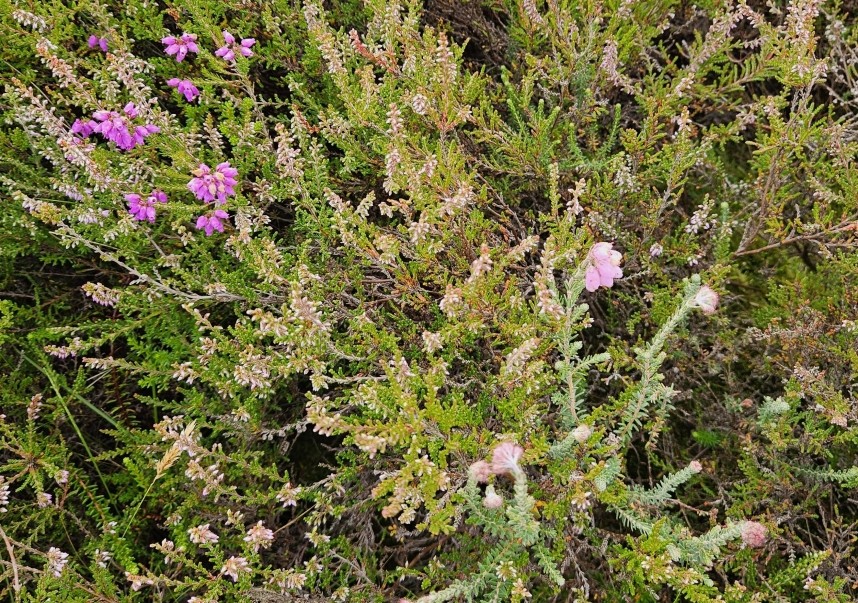
Bell Heather, Cross-leaved Heath and Common Heather Newton Moor July 2024 © Richard Baines
After the woodland edge the trail moves back towards the moor crossing an area known as Black Nab. Adjacent to the path are a series of wet springs known as The Race. The wild vegetation dominated by rushes and willows proved to be excellent habitat for songbirds with Reed Buntings, Stonechats and a young Willow Warbler practising its song. With the heather to the south and woodland to the north this line of wild habitat connects the two landscapes really well.
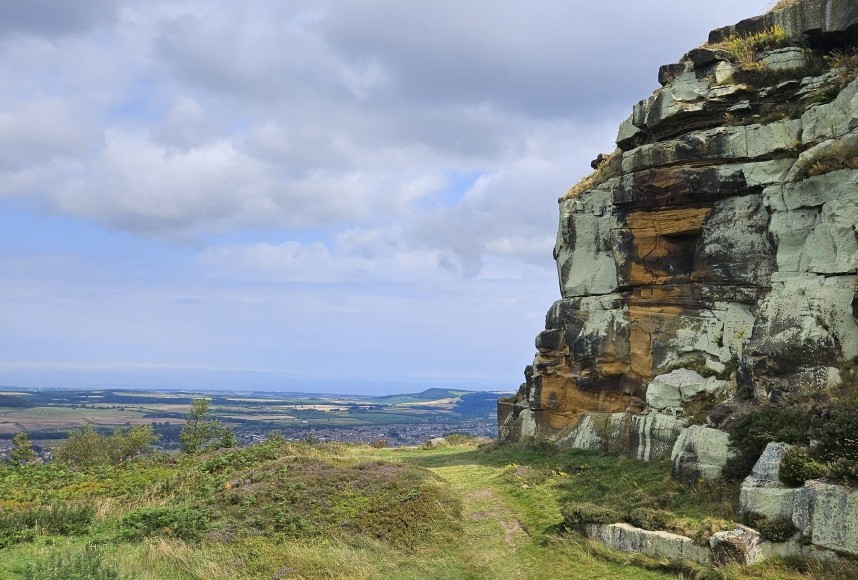
Highcliff Nab © Richard Baines
Our last view of the moors was at Highcliffe Farm, then the path enters Guisborough Woods. My mind was still focused on butterflies but I didn’t expect a big orange Silver-washed Fritillary to be the first one I saw in these woods. This spectacular insect is common in the south of England but is a relatively new coloniser in our northern forests. After such a wet and chilly spring, I was very pleased this butterfly had survived to emerge in the summer.
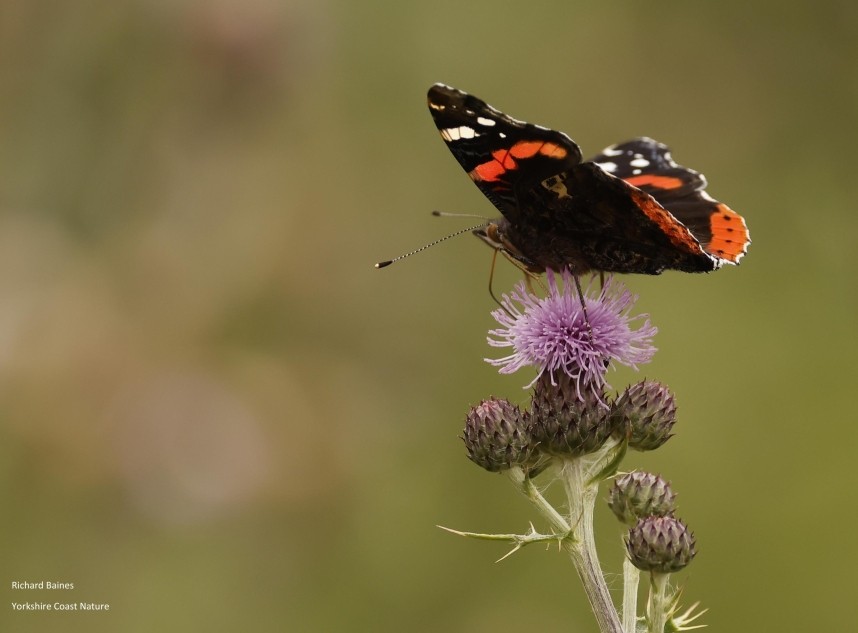
Red Admiral Guisborough Woods July 2024 © Richard Baines
Lunch in the forest gave me time to stretch my ears listening for bird sounds. Shortly after sitting on a bench close to mature Scots Pine, I heard Common Crossbills singing which was a very nice addition to the days walk. Nearby a line of thistles attracted six Red Admiral and two Small Tortoiseshell butterflies.
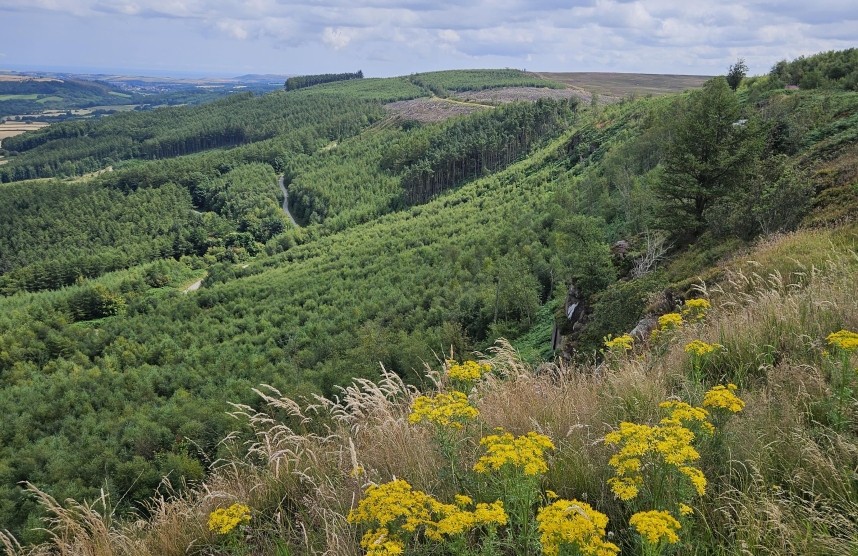
Guisborough Woods looking towards the North Sea July 2024 © Richard Baines
We could see the North Sea as we walked downhill through the woods to the village of Charlton. There is almost no section of the Cleveland Way which doesn’t have great views over spectacular landscapes. Leaving the forests and moorland behind us the coast is the next part of our journey just as migration kicks off.
© Richard Baines, Yorkshire Coast Nature



 Back to Blog
Back to Blog
